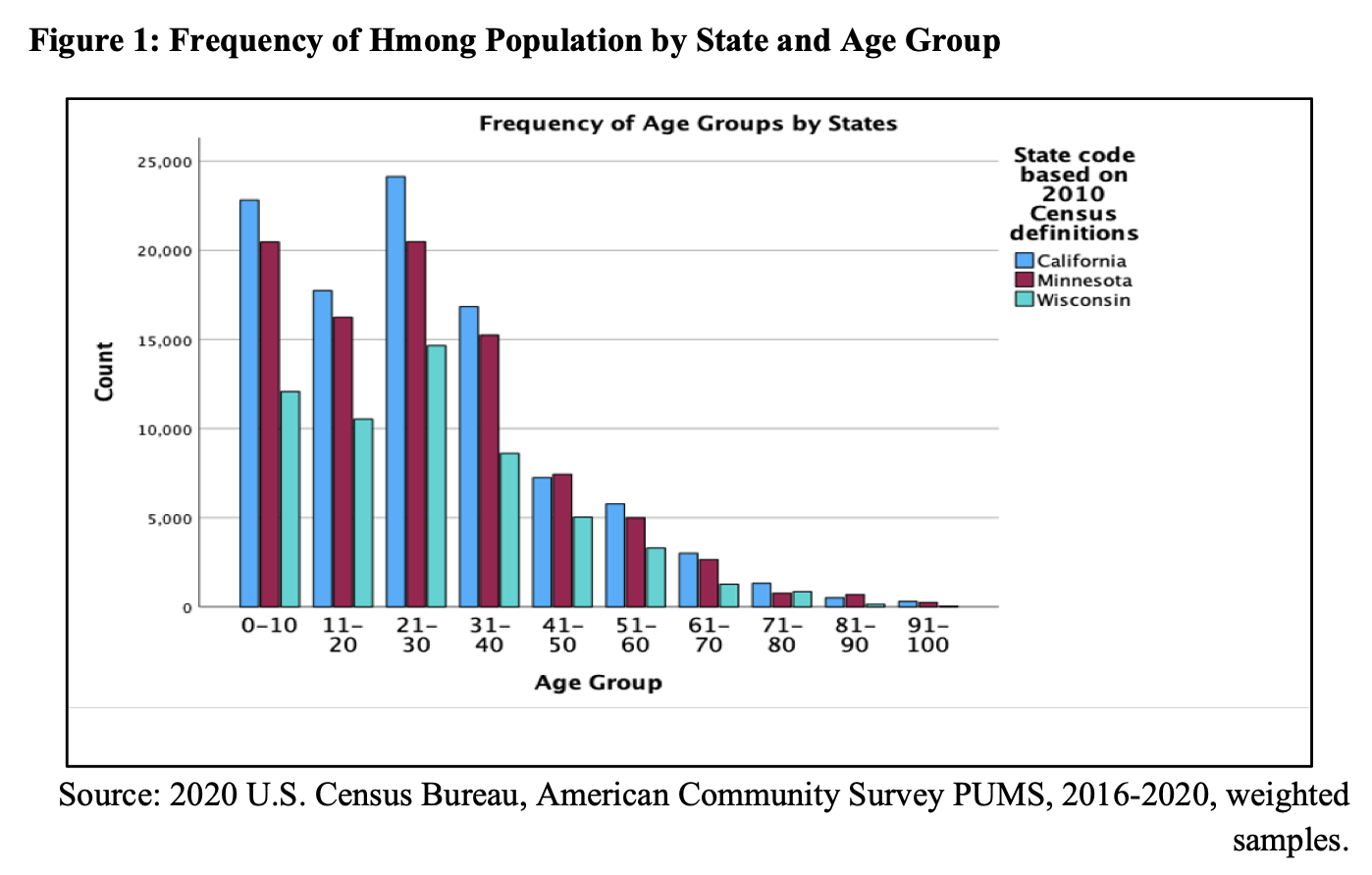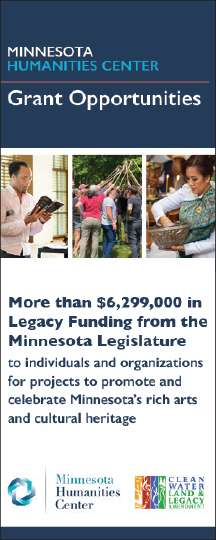Worth The Sacrifices Of Hmong Soldiers: A Condensed Overview Of Hmong Communities In Minnesota, Wisconsin, and California
By
Dr. Pa Nhia Xiong, Ed.D.
Assistant Professor, California State University, Fresno
Dr. Christina V Luna, Ed.D.
Associate Professor, California State University, Fresno
Dr. Susan Tracz, Ph.D.
Professor Emeritus, California State University, Fresno
This is a condensed summary of volume 26, Issue 1 of the Hmong Studies Journal
For nearly five decades, Hmong Americans have been working to rebuild their lives after being uprooted by the Secret War in Laos. These “forgotten allies” of the U.S. military arrived as refugees in the 1970s, traumatized by war and struggling to adjust to a drastically different society. This study, based on U.S. Census and American Community Survey (ACS) data from 2016–2020, highlights the economic, educational, and cultural progress made by Hmong communities in Minnesota, Wisconsin, and California – home to the three largest Hmong populations in the country.
A Brief Background
The Hmong are a resilient people with strong communal traditions and no written language prior to 1954. Persecuted in their native lands, they sought freedom and opportunity in the U.S., with many settling in states that offered refugee support and jobs.
Upon arrival, most Hmong had little or no formal education, and they faced language barriers and culture shock. Many relied on public assistance, but over time they began to pursue the American dream, especially through education and employment.
Minnesota: A Hub Of Growth And Opportunity
Minnesota’s Hmong population, the second largest in the nation at 89,241, has experienced tremendous growth since the 1990s. In fact, Minnesota has shown the fastest rate of Hmong population growth among the three states, largely due to the economic opportunities available across a wide range of industries.
Minnesota now leads in employment rates among Hmong residents. It has the highest number of Hmong individuals actively working – about 25% of all employed Hmong in the U.S. This is partly attributed to the state’s robust workforce development programs and culturally responsive education systems.
Income levels in Minnesota’s Hmong community have shown steady improvement, though disparities remain. Most Hmong earn under $90,000, and while men tend to earn more than women, this wage gap has been narrowing. Notably, Minnesota Hmong women have made strides in higher education. The state has more Hmong women earning doctoral degrees than men – an exception to the national trend.
In terms of poverty and public assistance, only a small percentage of Minnesota’s Hmong population currently receives cash public aid, a drastic decrease from previous decades. However, a significant portion of residents still qualify for other government support like Medicaid and SNAP.
Educationally, Minnesota’s Hmong community has shown impressive gains. More Hmong are completing bachelor’s and advanced degrees, and a growing number are entering the professional workforce. This trend is fueled by strong support from parents who emphasize academic success as a way to honor the sacrifices of earlier generations.
Culturally, Minnesota Hmong have maintained strong intergenerational family structures. Many households are multigenerational, which strengthens language retention and the preservation of cultural practices.
Wisconsin: Steady Progress And Educational Leadership
Wisconsin’s Hmong population stands at over 56,000 and has long been one of the strongest communities in the Midwest. It has experienced consistent population growth and now boasts one of the highest concentrations of Hmong residents relative to state population size.
In employment, Wisconsin Hmong are competitive with their Minnesota peers. The unemployment rate is remarkably low, and fewer people are outside the labor force. Interestingly, more Wisconsin Hmong males report earning over $300,000 annually than in any other state studied. This suggests economic mobility is increasingly accessible within this community.
Wisconsin also stands out in educational attainment. While men still slightly edge out women in doctoral degrees earned, Hmong women in the state have made significant educational gains. Wisconsin is also home to a high number of Hmong professionals in healthcare, education, and business sectors.
Poverty levels among Wisconsin’s Hmong population have also declined, although disparities persist, particularly for women and elders. Only 1.4% of Hmong Wisconsinites receive cash public assistance, but many still live close to the poverty line and receive other forms of support.
Despite these challenges, cultural preservation remains strong. The state’s Hmong communities prioritize language retention and traditional practices. Intergenerational homes are common, which reinforces community cohesion and supports youth development.
California: Cultural Center Facing Economic Hurdles
California hosts the largest Hmong population in the U.S., at nearly 100,000, primarily concentrated in the Central Valley. It has long served as a cultural and political hub for Hmong Americans. However, California’s Hmong communities face greater economic challenges than their counterparts in Minnesota and Wisconsin.
California Hmong have the highest rate of unemployment and public assistance usage among the three states. Many individuals earn less than $30,000 annually, and overall income levels are lower. The economic disparity is especially pronounced among women, who continue to report lower income levels and higher dependency on public support.
Despite these challenges, the state remains a center for Hmong advocacy and education. Many Hmong Secret War veterans who settled in California have shared their stories in hopes of encouraging younger generations. Their sacrifices have inspired children and grandchildren to pursue academic and professional success.
California also remains a stronghold for Hmong culture and language. A high percentage of Hmong Californians are bilingual and live in extended family households, mirroring traditional structures that reinforce community and cultural values.
Educational And Cultural Continuity
Across all three states, Hmong Americans have made significant educational gains. Although bachelor’s degree attainment dropped slightly between 2010 and 2020, thousands more Hmong have entered higher education. Master’s and doctoral degrees are still less common, but the trends indicate slow and steady improvement.
Culturally, language maintenance and extended family living remain central to Hmong identity. Over 80% of Hmong speak their native language at home, and many live with parents or grandparents. These traditions help preserve Hmong identity, especially among younger generations growing up in the U.S.
Honoring The Secret War Legacy
One of the most powerful themes across all states is the enduring legacy of the Hmong Secret War soldiers. These individuals made unimaginable sacrifices alongside the U.S. military, often without recognition or benefits. While many of these heroes have since passed, their dreams live on through their children’s educational and economic success.
Research indicates that Hmong parents – particularly former soldiers – use their wartime experiences to motivate their children. They stress the importance of education as the pathway out of poverty and the means to build a better life. Many Hmong youth have taken this message to heart, striving to achieve success in honor of their families’ sacrifices.
The Hmong people have made incredible strides in less than 50 years in the U.S., particularly in Minnesota and Wisconsin. Employment, education, and cultural preservation efforts show a resilient community still healing from war but committed to progress.
Minnesota leads in employment and higher education success. Wisconsin demonstrates notable economic advancement, especially among Hmong men. California, while rich in history and culture, continues to face more acute economic challenges. Nonetheless, all three states reflect a strong commitment to honoring the legacy of the Secret War and building a future rooted in opportunity, education, and cultural pride.










